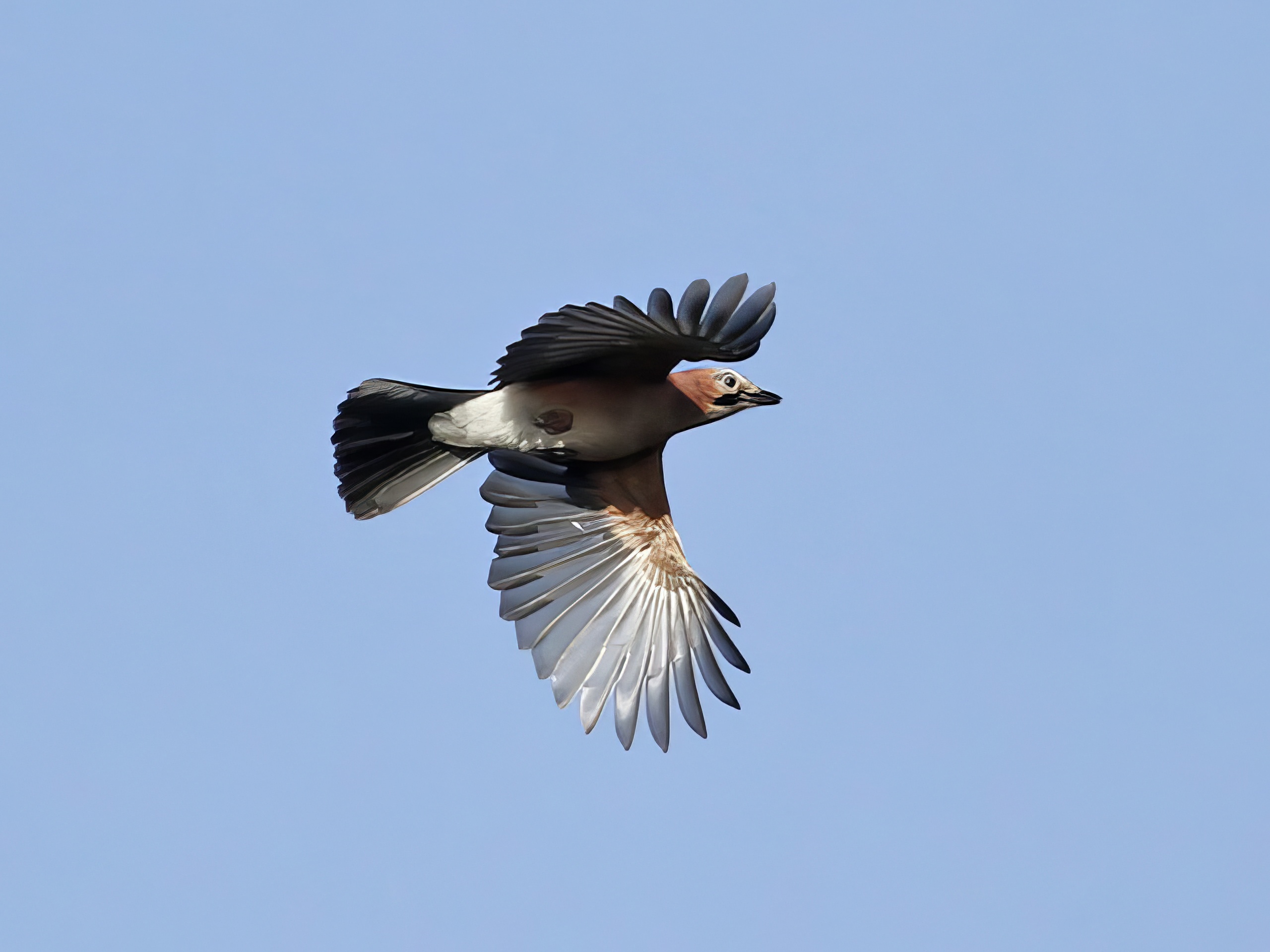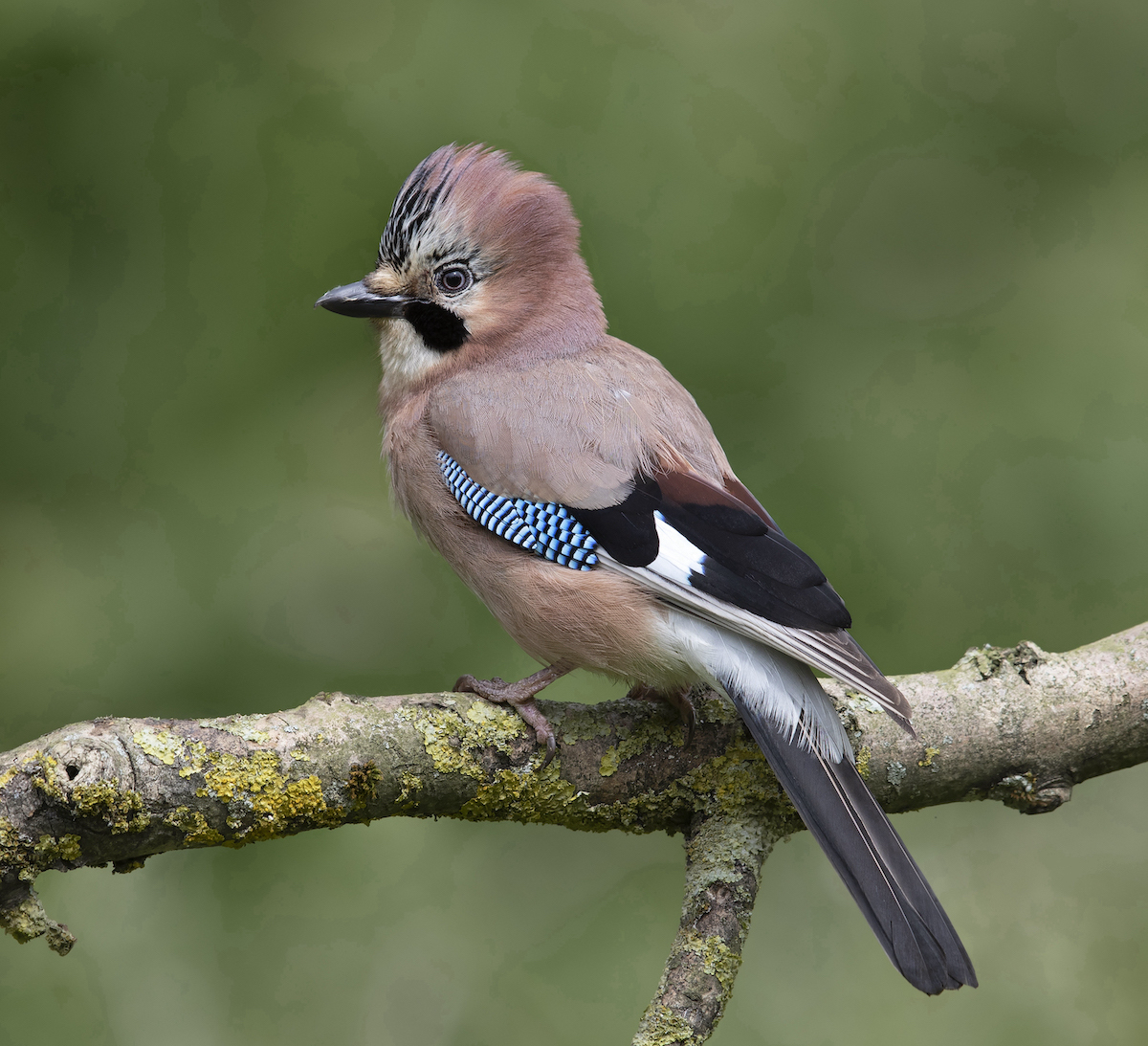Jay Garrulus glandarius
Common resident, irregular migrant and winter visitor.


Jays are essentially woodland birds and they do less well in Lincolnshire with its low woodland cover. The Atlas estimated 1,500 pairs in the late 1980s and surprisingly enough the APEP4 adjusted estimate came up with 1,500 pairs for the population in 2016. That tallies with the England BBS index which shows an overall 3% change since 1994. The species is not frequent enough in Lincolnshire or the East Midlands for a BBS index chart to be produced. Jays exhibit interesting but irregular movements along the coast, where they do not breed. Lorand and Atkin (1989) mentioned 8 years with significant movements between 1880 and 1935 and a significant one in autumn 1983 with flocks of up to 50 birds on the coast. More recently in autumn 2012 movements of Jays were among the largest ever recorded in the county. The first big flocks were seen on October 8th-9th when 70 flew south on each day at Saltfleetby-Theddlethorpe NNR. Also on October 9th another 80 went south at Gibraltar Point, when more than 200 were counted on the coast as a whole. Further movements declined as the month went on with few reported after October 25th. One 1CY bird ringed at Gibraltar Point on October 11th was recovered freshly dead at Sandhall, Skelton in West Yorkshire on November 17th 2012. The mother of all movements came the following spring, perhaps unsurprisingly, when 164 went south at Gibraltar Point on April 30th 2013. Numbers declined into early May, but there were still 95 at Gibraltar Point on 5th and 30-40 on several days to the end of the month. A 1CY bird ringed at Kilnsea in April 2013 was retrapped at Gibraltar Point during this movement on May 5th. Since then, the only other movement of note was seen in May 2015 when Gibraltar Point had 26. Large movements of Jays numbering 1000s are known in central Europe and in 2019 some 42,000 were logged moving at Überlingen along the shores of Lake Constance, Germany. The causes of these movements are unknown but may be related to the failure of acorns, beech mast and hazelnuts.
(Account as per new Birds of Lincolnshire (2021), included October 2022)
